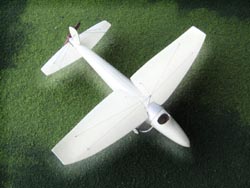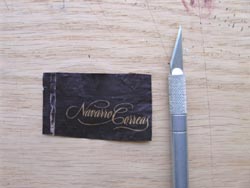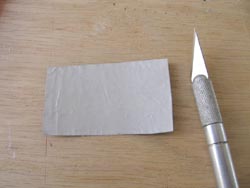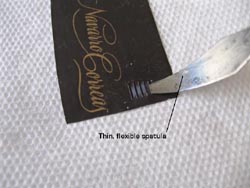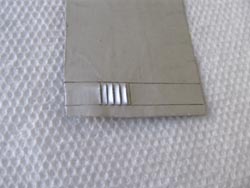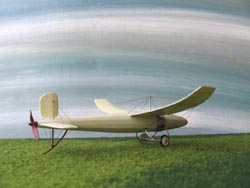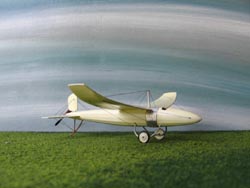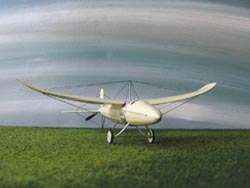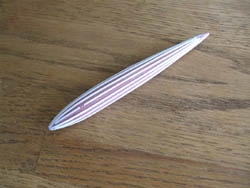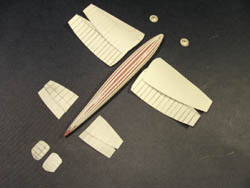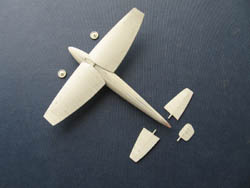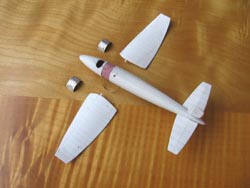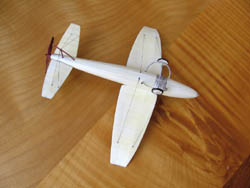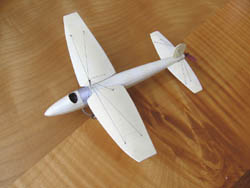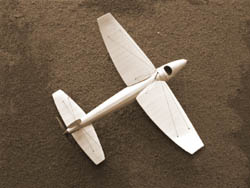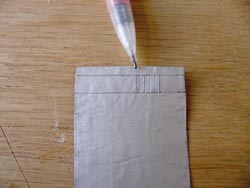Scratch-built 1/72 Paulhan-Tatin aero-torpille-1911
|
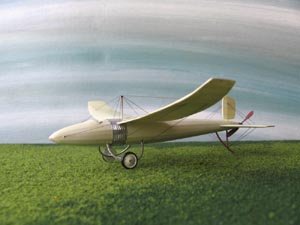 |
Background
The Paulhan-Tatin aero-torpille (aerial torpedo) of 1911 is the perfect
example to illustrate the word “fuselage”, a French-coined
term meaning spindle-shaped, originated from the Latin “fusus”,
spindle.
This is one of the many aviation-related terms being established at
the time to name the parts of the flying wonders in the Dawn of Airplane
Era. If you look around among the planes of that time, you will see that
what we now give for granted regarding shapes and aerodynamics wasn’t
a common sight then, a period of flying forests of struts, wires and exposed
structures, hence the importance of the “aero-torpille”.
The pusher configuration was elected in order to further increase the
cleanness of the design, aimed to offer the less possible resistance to
the air.
The engine, a Gnome of 50 hp, was enclosed in the middle of the fuselage
and a transmission going all the way down moved the pusher propeller.
The whole machine was canvas-covered save the section where the engine
was, which had louvered metal plates all around.
From period photos you can tell that the machine was slightly modified
along its life: wheels being canvas-covered or not, tail skid reinforcements
had variations, a minor alteration of the tail shape, the presence or
not of a mast at the very front tip of the fuselage, etc.
The model:
Very simple indeed, although for me a great leap regarding the possibility
of working with round shapes, thanks to the adoption of Fimo or Sculpey,
both “bakeable” plastics.
The basic form of the fuselage was hand-modeled in Fimo, sanded and
covered with styrene strip stringers. Then putty was applied to fill the
gaps and the whole sanded again, but preserving the “facets”
created by the process.
The results are not bad, but probably would have been better with round
stringers made of stretched sprue, instead of the “flat” strip
ones. Another finding was a way to make the metal louvers, using the wine
cork wrapping of the thick type –Argentinean wines seem the work
better J- .
Of course, I realized the right way to do it after I glued mines. Both
processes are depicted with images here.
For making the flying surfaces the time-honored method of scribing the
ribs from the inside of the styrene sheet was used, being the surfaces
formed by two pre-curved parts trapping the spar.
The propeller blades were made of two laminations of 0.25 mm styrene
sheet, twisted first, then glued together, sanded and later attached to
the spinner.
The white metal wheels are from Aeroclub Models. Rigging is black permanent
marker-painted monofilament. The –painfully- curved metal landing
gear supports –with suspension in the original- are from “Strutz”.
The cockpit cavity was carved out of the fuselage with a spherical Dremmel
bit and a simple scratch seat fitted.
At 9.00 meters of span, in 1/72 it is a small model, but somehow not
too many boo-boos were committed.
The machine looks very modern, especially when compared to planes of
the same era: streamlined, monoplane, fully enclosed engine…and
it flew! reputedly to a speed around 150 kph –about ninety-something
miles per hour.
Monsieur Paulhan and Monsieur Tatin knew what they were doing!
|
|

